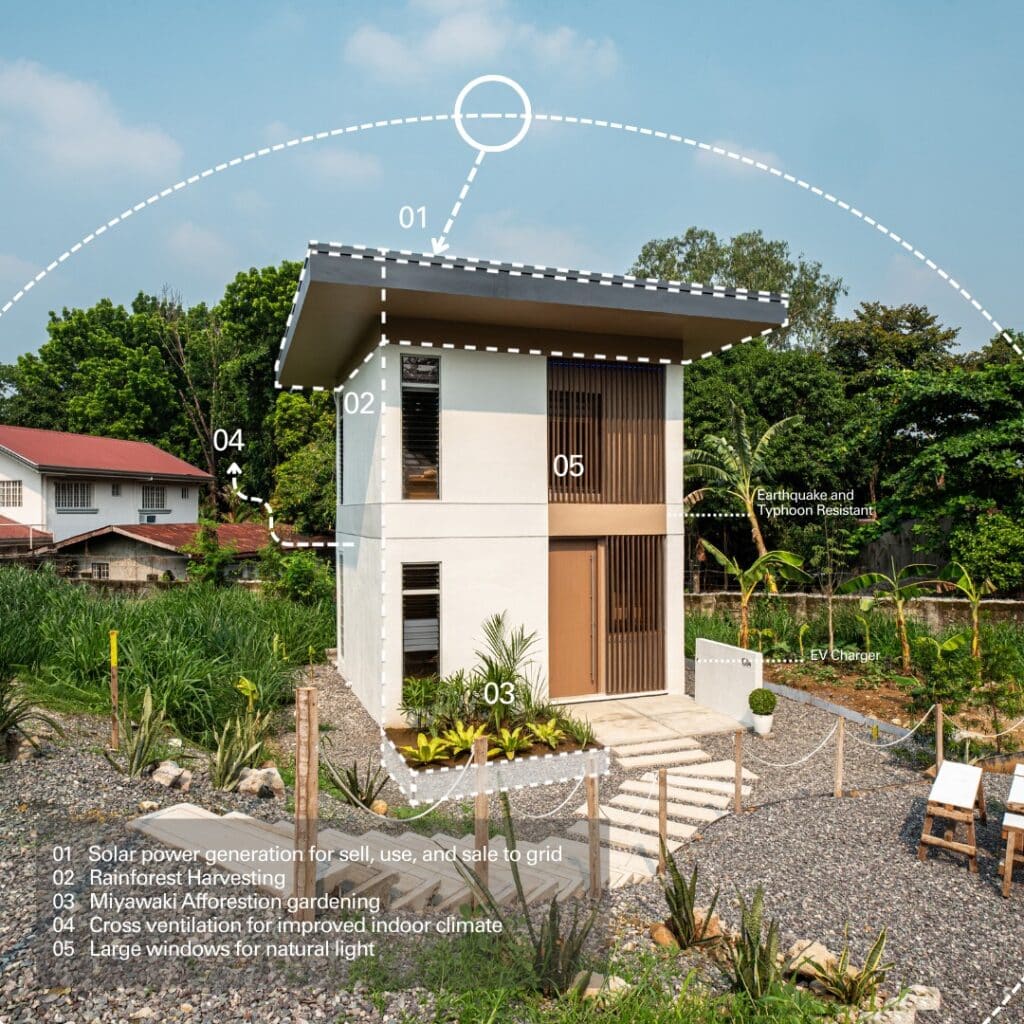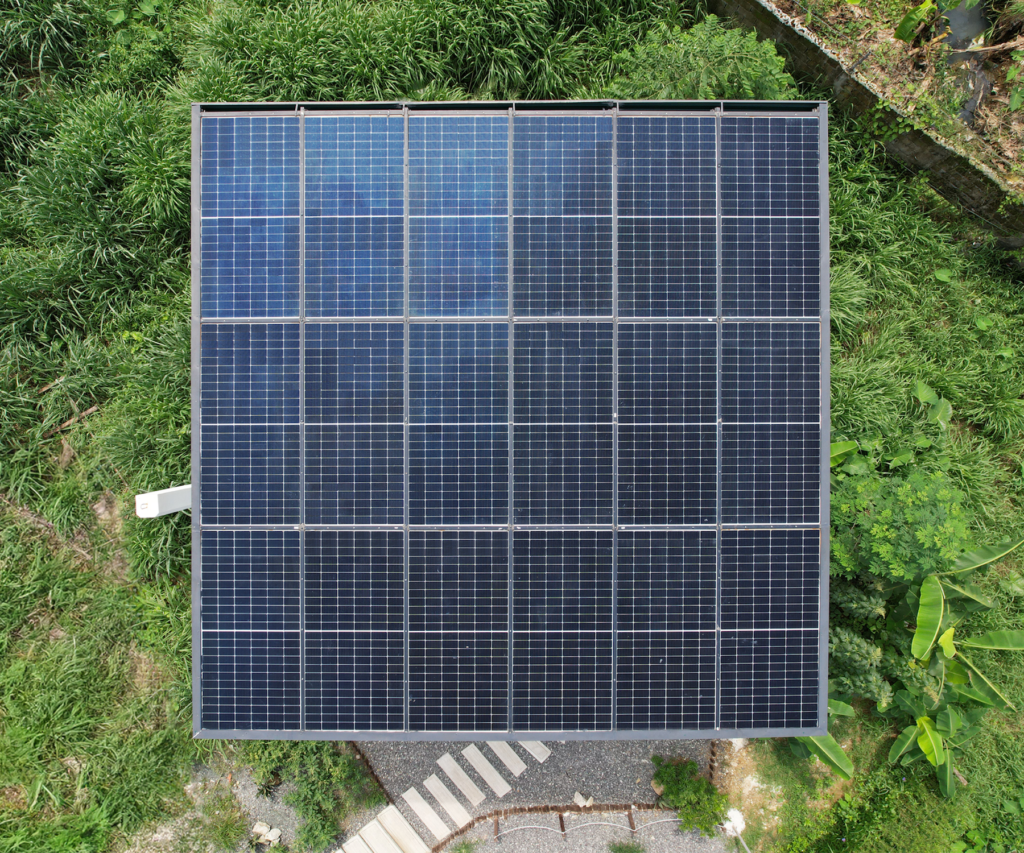The Philippines, like many countries, is heavily reliant on non-renewable energy sources. This type of reliance results in fluctuating and rising energy prices.
According to the Department of Energy (DOE), electricity costs in the Philippines are among the highest in Southeast Asia, with households often facing high bills due to the use of air conditioning and other energy-intensive appliances. Unfortunately, these costs can account for a substantial portion of a family’s monthly budget, leading to financial strain, especially in low-income communities.
With this in mind, solar power is one of the best solutions for these rising energy costs. With an upfront investment in solar roof systems, Filipinos can enjoy reduced monthly electricity fees, making solar power not just an eco-friendly choice, but a financially sound one as well.

How solar roofs save you money?
If you have a solar roof system, you effectively generate your own electricity, which then significantly cuts your dependency on the grid. For many households, that could mean hundreds of pesos saved every year.
1. Lower monthly electricity bills
Solar panels work by capturing sunlight and converting it into electricity. The electricity is then used to power your home’s appliances and systems.
During the day, when sunlight is abundant (so is the country’s heat wave), your solar system generates enough energy to cover your daily needs. In cases where you produce more electricity than you consume, the excess is sent back to the grid (a process known as net metering), and homeowners receive compensation for this energy.
If your home relies on the sun rather than grid power, you can drastically reduce their monthly energy bills, and in some cases, eliminate them entirely.
For instance, a typical family in the Philippines could save between ₱5,000 to ₱8,000 per month on electricity after installing solar panels, depending on their energy usage and the size of the system.
2. Government incentives and tax benefits
To encourage the adoption of renewable energy, governments around the world, including the Philippine government, offer various incentives. We’ve mentioned before about the renewable energy act of 2008 in the country. This one provides tax incentives for those who install solar systems. These incentives can offset the initial installation costs, allowing homeowners to benefit from solar power sooner.
Solar roofs and income generation
Perhaps the most surprising benefit of solar power is its potential to generate extra income.
While most homeowners think of solar as just a way to save on electricity bills, the ability to sell excess energy to the grid or third-party off-takers is a unique economic benefit.
According to the Philippine Solar Power Alliance (PSPA), households that install solar panels and participate in net metering can earn money from their energy production, making solar power a profitable long-term investment.
To make matters more interesting, we at BillionBricks build solar homes that embrace this model. This allows Filipino communities to generate income through selling excess energy. For homeowners, this income can help lower mortgage payments and contribute to financial stability, making solar power not just a cost-saving solution but an opportunity to improve the household’s financial health.
The long-term benefits of solar roofs
While the initial investment in solar panels can be significant, the long-term savings far outweigh the costs. According to a study by the International Renewable Energy Agency (IRENA), the cost of solar panels has dropped dramatically in recent years, making them more affordable than ever. Also, let’s not forget the solar panel financing allowed by the Philippine government.
Over the life of the solar system—typically 25 to 30 years—homeowners can expect to save anywhere from ₱200,000 to ₱500,000 on energy bills, depending on the size of the system and their energy usage.
Additionally, with solar energy systems becoming more efficient and affordable, the return on investment (ROI) is becoming faster. Homeowners can recoup the cost of installation in as little as 4 to 7 years, after which they can enjoy free electricity for the remainder of the system’s lifespan.
Solar roofs for your home are an investment that pays back, both in financial savings and long-term sustainability.

This type of investment allows you to reduce your energy costs, increase property value, and generate income through surplus energy.
With the added benefits of government incentives and tax rebates, we think that solar energy is becoming an increasingly accessible and economically beneficial solution for homeowners.
BillionBricks’ Solar Home Community Project is an excellent example of how solar power can be integrated into affordable housing, creating homes that are both financially and environmentally sustainable. Check out the projects today and see how you too can build a home that pays you back.
References:
- Philippine Solar Power Alliance (PSPA). (2023). The Economic Benefits of Solar Energy in the Philippines: How Solar Power is Reshaping Communities. Retrieved from https://www.pspa.org.ph
- International Renewable Energy Agency (IRENA). (2022). The Future of Solar: A Global Overview of Solar Power in Sustainable Development. Retrieved from https://www.irena.org
- BillionBricks. (2023). BillionBricks Solar Home Community: A Sustainable Housing Model for Affordable and Resilient Communities. Retrieved from https://www.billionbricks.org
- Green Building Council Philippines. (2021). Sustainable Housing and Solar Power: How Solar Homes Are Transforming the Market. Retrieved from https://www.gbcp.org.ph




